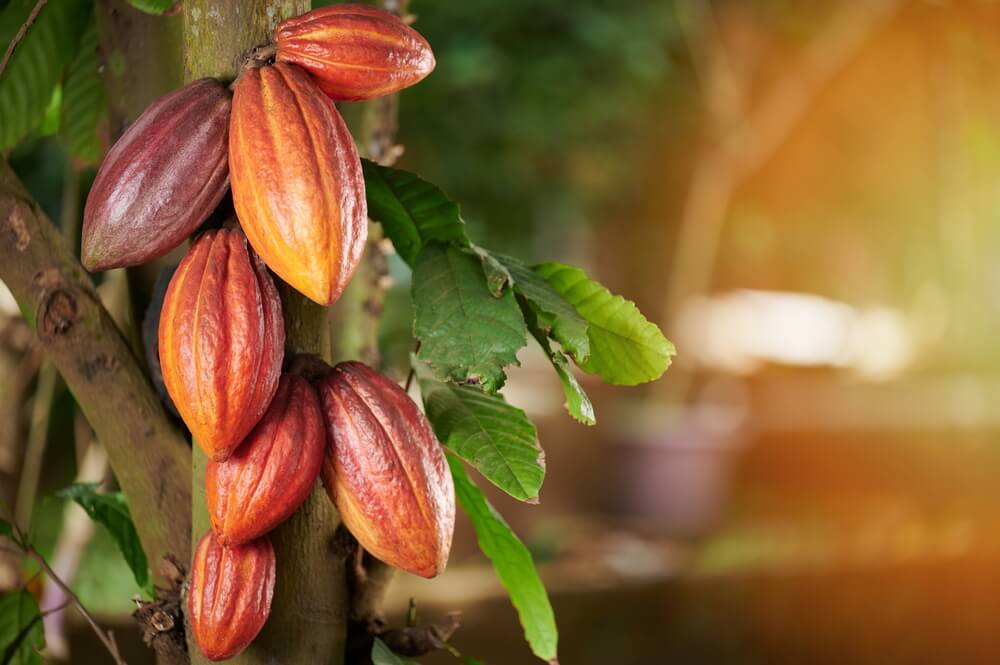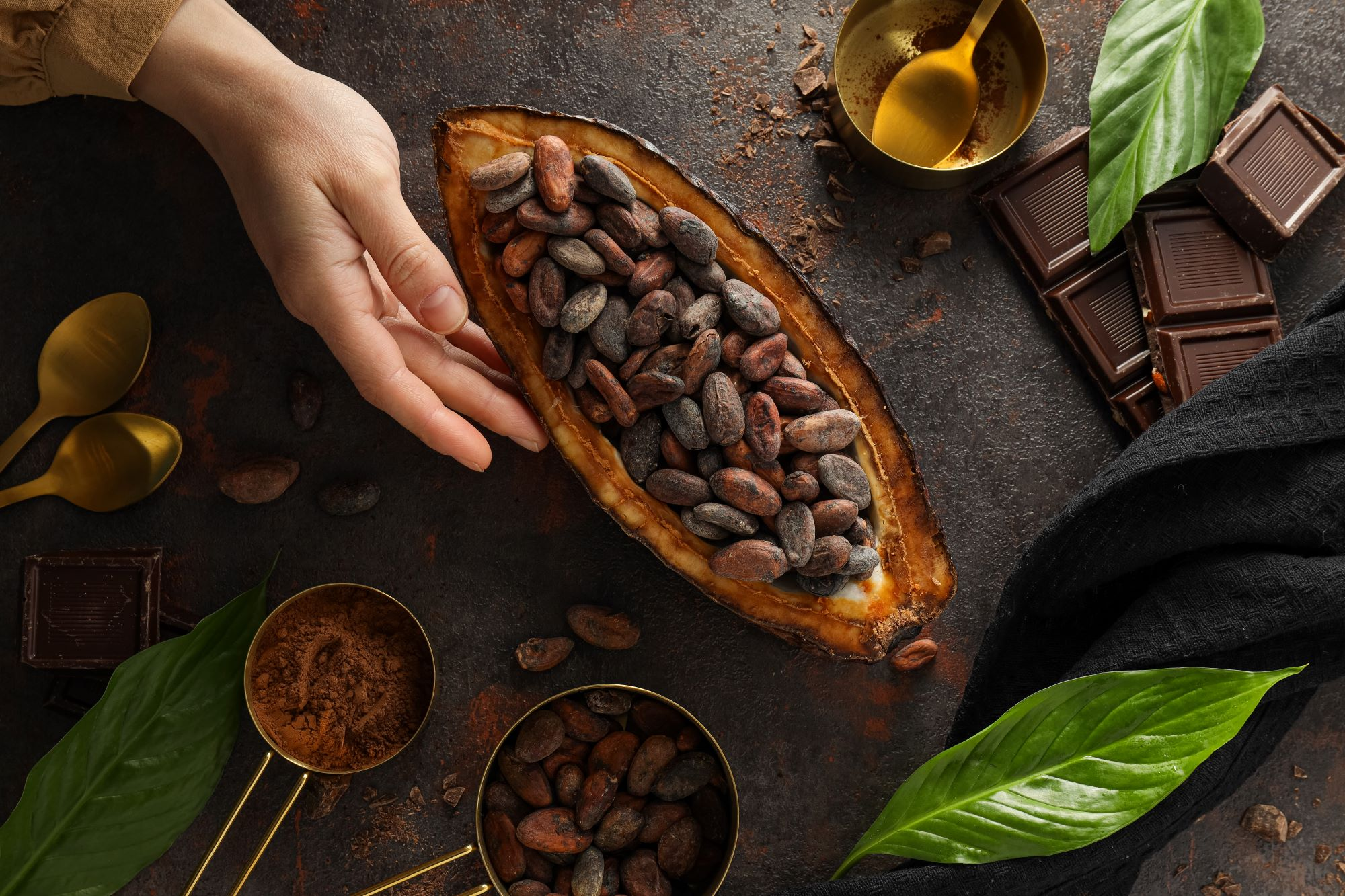West Africa is the heart of the world’s cacao industry, producing nearly 70% of the global supply. However, a new study has revealed that climate change is wreaking havoc on cacao production in this region, leading to declining yields, rising production costs, and an inevitable surge in chocolate prices worldwide.
Unpredictable weather patterns, excessive heat, droughts, and plant diseases are becoming increasingly common, threatening the livelihoods of millions of farmers and the future of the chocolate industry. As cacao trees struggle to adapt to the rapidly changing climate, the long-term sustainability of cacao farming is now under severe threat.
Rising Temperatures and Unfavorable Growing Conditions
Cacao trees thrive in warm, humid climates, typically requiring temperatures between 21 and 32 degrees Celsius to flourish. However, the impact of climate change has caused prolonged periods of extreme heat, with many cacao-producing regions in West Africa now experiencing temperatures well above 32 degrees Celsius.
According to a report by Climate Central, climate change has increased the number of excessively hot days in Ivory Coast and Ghana by at least three weeks over the last decade. These extreme temperatures stress cacao trees, reducing their ability to produce healthy and abundant pods.
Furthermore, cacao trees are highly sensitive to temperature variations, and prolonged exposure to high heat can disrupt the flowering and fruiting cycle. The trees require a delicate balance of rainfall and dry periods to yield optimal harvests, but with rising global temperatures, the necessary climate balance is being disrupted.
Read : A Butterfly Collector in Africa with More Than 4.2 Million Seeks to Share Them for the Future
In 2023, the world witnessed the hottest year on record, and researchers found that climate change drove temperatures above 32 degrees Celsius on at least 42 days across two-thirds of the analyzed cacao-producing areas. This increase in heat stress is directly linked to lower cacao yields and a significant decline in productivity.
Droughts and Water Scarcity Affecting Cacao Farming
In addition to rising temperatures, droughts have become a major challenge for cacao farmers in West Africa. The region has seen erratic rainfall patterns, with prolonged dry spells disrupting cacao cultivation. Cacao trees require consistent moisture to thrive, but many areas have faced severe water shortages due to shifting weather patterns.
The reduction in rainfall means that cacao trees struggle to develop healthy pods, leading to a decline in production. Farmers who rely on natural rainfall for irrigation are now witnessing drastic changes in their harvests, further exacerbating the economic strain on the industry.
Read : Zimbabwe: Home to the World’s largest Waterfall
The increasing frequency of droughts has also led to soil degradation, making it even more difficult for cacao trees to absorb essential nutrients. As water becomes scarce, farmers are forced to invest in expensive irrigation systems, which many small-scale growers simply cannot afford.

This results in lower yields, financial hardships, and an overall decline in the sustainability of cacao farming. If current climate trends continue, droughts are expected to become even more severe, further threatening the future of cacao production in the region.
Plant Diseases and Pest Infestations on the Rise
Climate change has also created favorable conditions for the spread of plant diseases and pests, which pose a serious threat to cacao crops. Rising temperatures and increased humidity levels have accelerated the spread of fungal infections, such as black pod disease, which can devastate entire cacao farms.
Black pod disease causes cacao pods to rot before they can be harvested, leading to massive losses for farmers. The disease thrives in warm and wet conditions, and the changing climate has created an ideal environment for its proliferation.
In addition to fungal infections, cacao farmers are also facing an increase in pest infestations. Warmer temperatures have allowed pests, such as mirids (capsid bugs), to multiply rapidly, causing significant damage to cacao trees. These pests feed on cacao pods, reducing their quality and yield.

Farmers are now forced to spend more on pesticides and other preventive measures, further driving up production costs. The combined effects of plant diseases and pest infestations have made cacao farming even more challenging, raising concerns about the long-term viability of the industry.
Economic Impact and Rising Chocolate Prices
The decline in cacao production has had a direct impact on the global chocolate market. As supply diminishes, the cost of chocolate has risen dramatically.
Farmers are struggling to keep up with the financial burden of managing climate-related challenges, leading to reduced profit margins and economic instability in cacao-producing regions. Ivory Coast and Ghana, the world’s top cacao producers, have already experienced a significant drop in output, causing major chocolate manufacturers to increase their prices.
Consumers around the world are beginning to feel the effects of these price hikes. Chocolate, once an affordable treat, is becoming more expensive due to the ongoing cacao shortage.
Many major brands have had to adjust their pricing strategies, and experts warn that if climate change continues to impact cacao production, chocolate prices could soar even higher in the coming years. The economic ramifications extend beyond the chocolate industry, affecting supply chains, labor markets, and international trade.
Sustainable Solutions and Future Prospects
To combat the challenges posed by climate change, researchers and agricultural experts are working on sustainable solutions to protect cacao production. One potential strategy is the development of climate-resistant cacao varieties that can withstand higher temperatures and drought conditions.
Scientists are also exploring agroforestry techniques, which involve planting cacao trees alongside other shade-providing crops to create a more resilient ecosystem. This method helps regulate temperature, improve soil health, and reduce the impact of extreme weather conditions.

Governments and organizations are also investing in training programs to educate farmers on climate adaptation strategies. By providing access to advanced irrigation systems, pest management techniques, and climate-smart agricultural practices, farmers can increase their resilience to environmental challenges.
Additionally, promoting fair trade practices and supporting small-scale farmers financially can help stabilize the cacao industry and ensure its long-term sustainability.
Climate change poses a significant threat to cacao production in West Africa, jeopardizing the global chocolate supply and the livelihoods of millions of farmers. Rising temperatures, droughts, plant diseases, and pest infestations are making cacao cultivation increasingly difficult, leading to declining yields and soaring chocolate prices.
As the world grapples with the consequences of climate change, urgent action is needed to implement sustainable solutions that will safeguard the future of cacao farming.
Investing in climate-smart agricultural practices, developing resilient cacao varieties, and supporting farmers through education and financial aid are crucial steps in mitigating the impact of climate change on this vital industry. Without immediate intervention, the world could face a future where chocolate becomes an increasingly rare and expensive luxury.
let’s enjoy few years on earth with peace and happiness….✍🏼🙏

